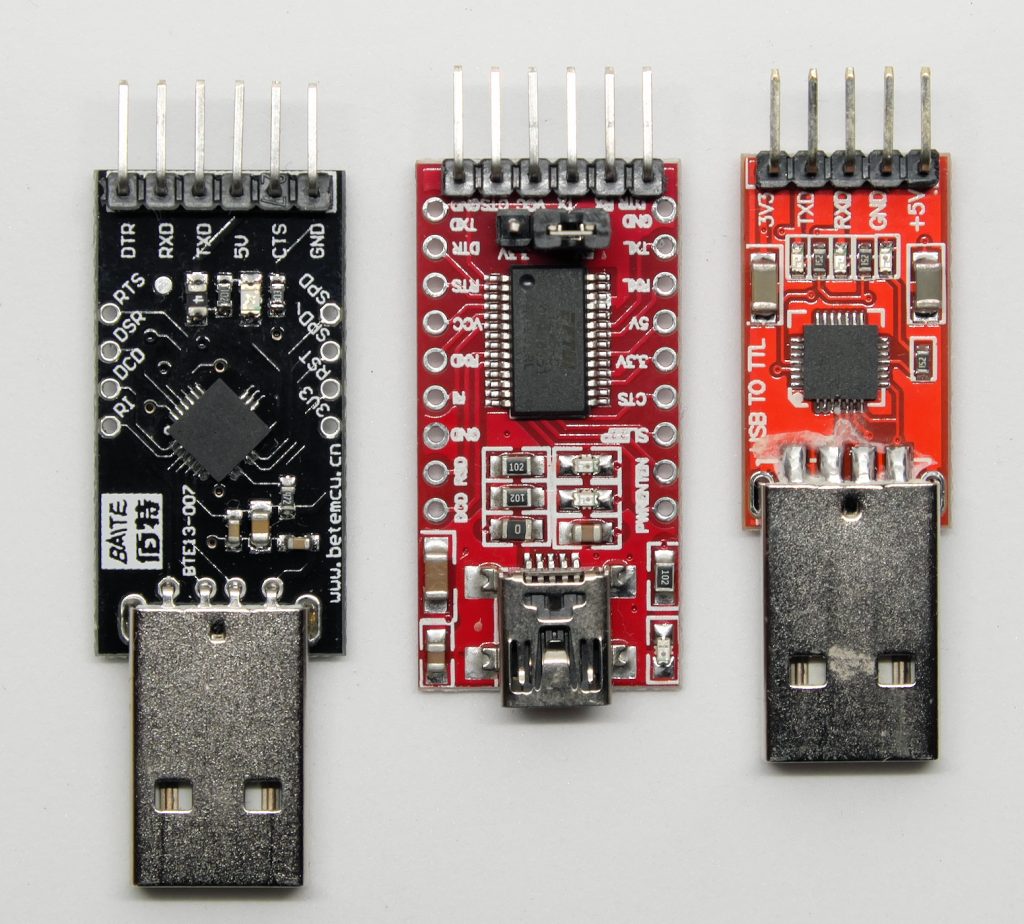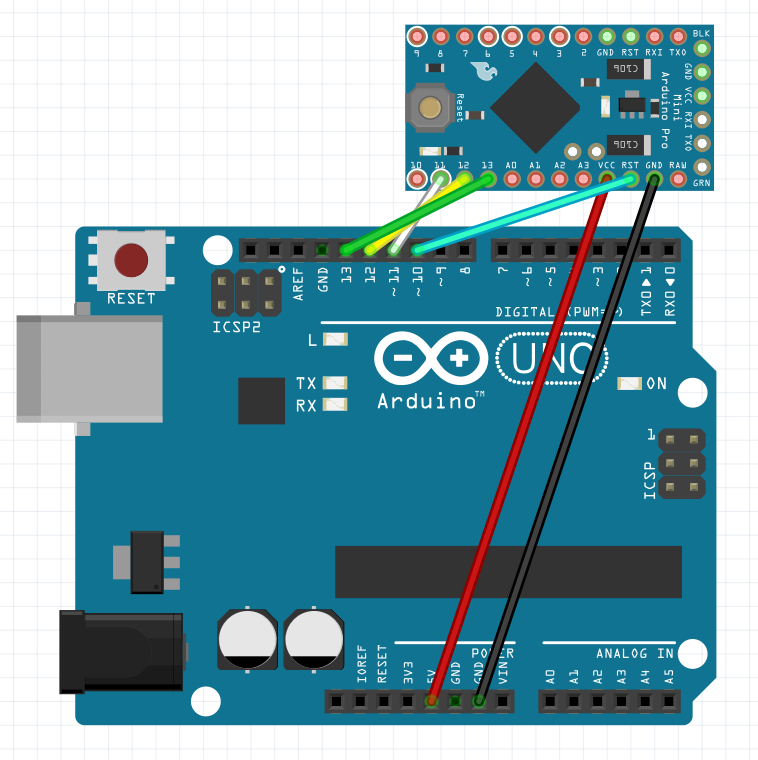How to Upload to Arduino Pro Mini
Full general comments
If y'all want to immortalize your project firmly in wire and solder, you lot usually don't practise this using an Arduino UNO, just choose either an ATtiny or ATmega microcontroller or a modest board such every bit the Arduino Nano or the Arduino Pro Mini which is described here. I will first talk most the different versions of the Pro Mini, then well-nigh the sketch upload using the USB-to-TTL module and finally focus on problem shooting. Programming of the Arduino Pro Mini is very convenient!
Various versions
First, at that place are four different versions of the microcontroller used, the operating voltage and the clock charge per unit:
- ATmega 328P, v V, sixteen MHz
- ATmega 328P, 3.iii V, 8 MHz
- ATmega 168, 5 V, 16 MHz
- ATmega 168, 3.3 V, 8 MHz
If you lot have developed your project with the UNO, then the 328P / 5V variant is near suitable, equally full compatibility is guaranteed. If you utilise iii.3 V components such equally certain sensors, the 3.3 5 variant tin can also be of interest for you lot. I myself accept only tried 328P /5V models. At Amazon you get the boards for roughly 3 Euros.
In addition, the boards differ partly in the layout, especially in the position of the pins A4 (SDA) and A5 (SCL), which are required for the I2C advice. For the models shown above, they are located at the narrow end side by side to the reset push (left model) and above A2 and A4 (right model). Unfortunately, with both models y'all can't conect A4 and A5 straight to a PCB circuit board. Why they don't stick to the filigree mensurate is a mystery to me.
Practical power supply
Very convenient is that you can operate the Pro Mini via the raw input with voltages betwixt 5 and 12 Five. Regardless of the exact supply voltage, I measured stable 5 V at the VCC pin. For example, it is suitable to operate the board with a 9 V block battery. Y'all can also connect a five V power supply source directly to the VCC pivot, just it should be a regulated one.
Sketch upload via Arduino IDE
For the Sketch Upload you need a USB-to-TTL converter module like i of the models shown here:

You can get these modules eastward.g. at Amazon for five to 10 Euro. They differ essentially in the format of the USB port, in the output voltage (3.3 and / or 5 V) and in the presence or absence of a DTR (Data Terminal Ready) pin. It's more than comfortable to employ the ones with DTR pin every bit you'll see soon. In improver, the modules use different fries, e.grand. FT232, CP2102 or CH340G. If everything works, yous may still demand a driver. They tin can be plant on the net without any problems. You tin can cheque the operational readiness of the module in the device manager of your Windows. Here, for example, everything is OK:

Upload with DTR
First, the Arduino Pro Mini is continued to the USB-to-TTL module as shown:

Then in the Arduino IDE:
- choose the right port which is connected to USB-to-TTL module
- choose "Arduino Pro or Pro Mini" as lath
- Choose the correct variant
- Select and upload the sketch – and that'due south it.

Upload without DTR
You have to reset the Pro Mini before the upload. This is exactly what the DTR connection does. If y'all don't accept one, you have to reset manually using the reset button on the Pro Mini. Information technology is not important when you lot press the button, merely the decisive cistron is when you release it. For this purpose choose "Upload" in the Arduino IDE, wait until the compilation is finished and release the reset key when it wants to upload (this is when the message in white font appears):

And if I don't have a USB-to-TTL module?
This too works, if y'all have an Arduino UNO. Description tin be constitute here. But I would recommend to invest in a USB-to-TTL module. This is standard equipment you should have anyway.
Assist! – troubleshooting
There are endless possibilities for errors. The cause can of course exist best defined if y'all know the fault message. But here are some general aspects that you can always check:
- Bank check the installation of the module
- Cheque cabling, replace cables
- Switch RX and TX, as it's sometimes incorrectly labeled on modules
- Check the settings in the IDE
Missing, wrong, or corrupted boot loader
When y'all upload from the Arduino IDE, you get the following ugly message:"avrdude: stk500_getsync(): not in sync: resp=0x00",and so information technology could exist related to the boot loader. Don't worry, you lot tin can burn information technology once again and it's similar this:
- Connect your Arduino UNO to the PC
- in the Arduino IDE select: File – Examples – ArduinoISP – ArduinoISP
- Board: Choose Arduino UNO, choose correct port
- Upload
- so choose Arduino Pro Mini every bit a board, select the right variant
- Developer: "Arduino as Internet access provider" (not: ArduinoISP!)
- wire as per this scheme:

- Then select in the menu: Tools – Burn Booloader.
If it still doesn't work, it might help to googling the mistake message. By the fashion, you will get a more than detailed message when uploading, if yous ready the post-obit check marker in the settings:

Well then, have fun with the Pro Mini! Do you have any comments, additions, improvements or questions? I'thousand happy about any annotate.
Source: https://wolles-elektronikkiste.de/en/programming-the-arduino-pro-mini
0 Response to "How to Upload to Arduino Pro Mini"
Post a Comment